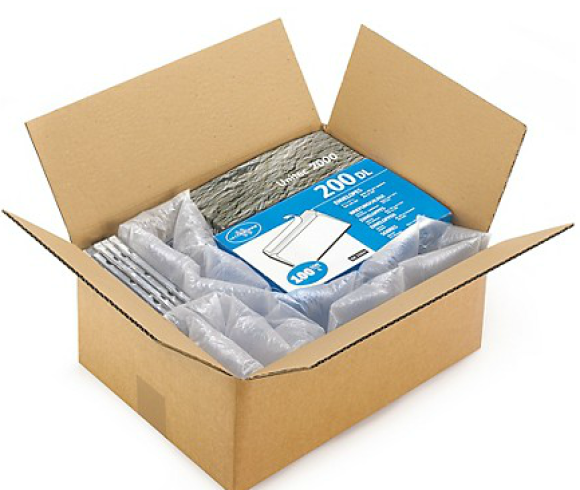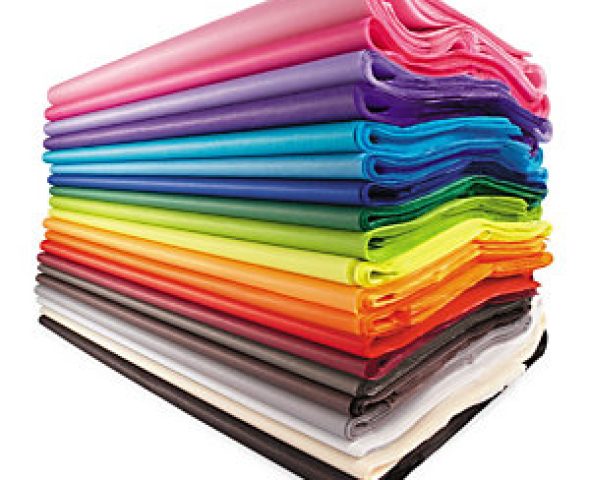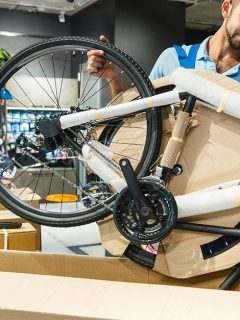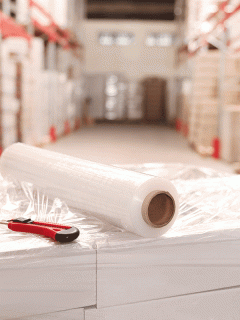You know what it’s like: you accidentally touch the wrong object – and you “get a shock”. The reason for this is electrostatic discharge (ESD = Electrostatic Discharge), which is noticeable to us humans at charges of around 3,000 volts or more. Lower amounts are not perceptible to humans. What is somewhat painful for people in a moment of shock can be really threatening for electronic devices. Especially more sophisticated components can already be damaged by a voltage of 10 volts. Anyone who frequently sends electronic components knows: electrostatic discharge occurs time and again, especially due to friction, which can damage sensitive products, shorten their service life or even destroy them completely.
The standard for ESD packaging
Although ESD cannot be avoided, it can be well controlled by using professional ESD postal packaging or antistatic packaging. The packaging is made of antistatic materials that dissipate the electrical voltage pulses from the surface of the packaging, thus preventing discharge inside the packaging. DIN EN 61340-5-3 classifies the material properties of ESD packaging and describes the resistance properties for these materials. Protective layers must therefore be conductive and should have low resistances (shielding layer up to 102 Ω, dissipative layer about 107-108 Ω). Packaging is divided into 3 categories depending on its electrical conductivity and must be labelled with the ESD protection symbol and the corresponding letter if the criteria are met:
Category (S) stands for “Shielding”:
This packaging meets the highest standards of ESD protection. They have a shielding effect against electrostatic discharge due to special coatings and thus form a barrier or envelope that limits the passage of current and strongly dampens the energy of an electrostatic discharge. Metallised Highshield bubble bags are an example of this. They protect electronic products twice over, as they consist of a 4-layer, metallised Highshield film and a well-damping, antistatic air cushion layer. They thus protect against electrostatic charging and shocks at the same time. The Highshield film has a particularly shielding effect. When the bag is completely closed, a Faraday cage forms around your product, dissipating dangerous charges – similar to sitting safely in your car during a thunderstorm. A resealable adhesive closure with peel-off protective strip secures the bag quickly, easily and reliably.
Highshield nap foam boxes protect sensitive contents according to the same principle: the box itself also acts like a Faraday cage, while antistatic foam inside fixes the product in place and reliably absorbs shocks. The boxes can be used immediately, as the box and foam padding are supplied already assembled. Sealed with tape or strapping band and address label, it is ideally suited as postal packaging. The metallised Highshield bags go one step further in terms of ESD protection: they have several layers of dissipative lacquers, polyester as well as polyethylene carriers and an aluminium metal coating. This means that they not only protect their contents from electrostatic charge as their own Faraday cage, they are also particularly shock and tear resistant – with a line resistance of E<15 nJoule.
Category (D) stands for “dissipative”:
The packaging dissipates frictional electricity from the contents via its surface, through a surface resistance of > 1 X 10² Ω and < 1 X 1011 Ω. This includes, for example, antistatic flat bags or antistatic bubble films.
Category (C) stands for “Conductive”:
The packaging is electrostatically conductive and has a surface resistance of > 1 X 10² Ω and < 1 X105 Ω . They conduct the frictional electricity from the package contents.
Antistatic packaging to protect against static charge
When packaging electronic components, dissipative or even shielding materials should be considered for all components of the packaging:
- Antistatic bags
- Dissipative: Smaller individual parts are best packed in antistatic bags – these are available with a pressure seal and made of dissipative PE film. For somewhat better cushioning protection, it is best to use antistatic air cushion or foam cushion bags.
- Shielding: Metallised Highshield bags offer even greater protection against electrical charge. These are also available as air cushion bags or as “simple” flat bags – with and without pressure seal.
- Antistatic cushioning/protection in the carton:
If larger components are to be fixed and padded in an outer carton, antistatic dimpled foam sheets or foam sheets as well as antistatic bubble wrap are ideal. - Antistatic cardboard box
If the electrical components are “wrapped” in an all-round, dissipative or even shielding individual packaging (be it in bags, bubble wrap or foam sheets), they can confidently be shipped and transported in a “normal” cardboard box. However, maximum protection is also offered by the practical “all-in-one solutions” with the Highshield nap foam box or the shipping box with electrically conductive plug-in foam. - Antistatic stretch wrapping
Stretch film connects the boxes to the pallet and provides support for the pallet load. With antistatic stretch film, this “layer” can be used for additional protection of electrostatic sensitive products. - Antistatic labelling
Electrostatic discharges as a completely common everyday phenomenon cannot be avoided. However, the risk can be reduced to a minimum by using the appropriate protective packaging. In addition to antistatic packaging, it is recommended to use the appropriate warning label. This clearly indicates electronically endangered components and suggests that the packaging or pallet labelled in this way should not be exposed to magnetic fields, as little friction as possible or extremely dusty environments.
















